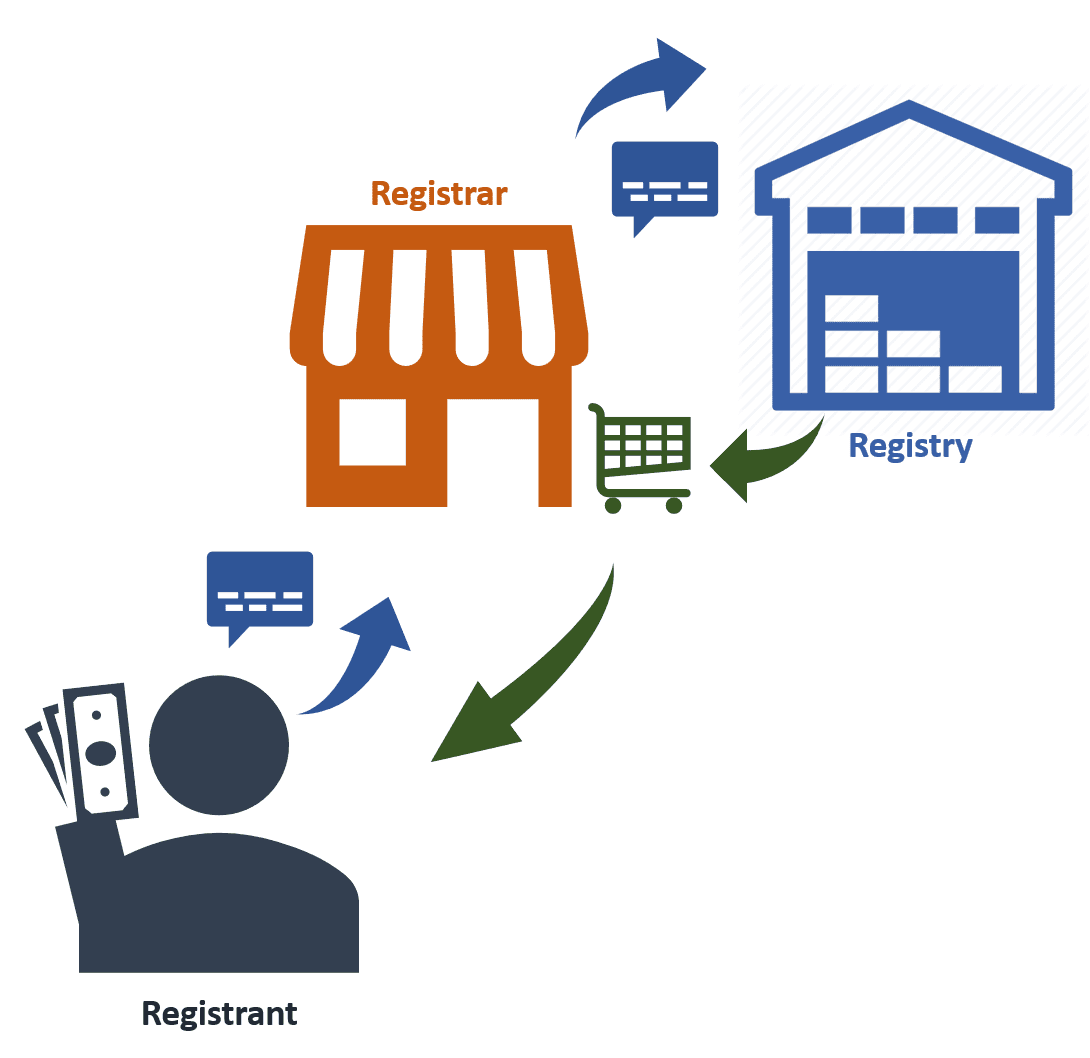The 3 R’s of Registering a Domain Name
In order to use a domain name on the Internet for your company or brand, you must purchase or register the name. The domain registration process can be understood by the 3 R’s (Registry, Registrar, Registrant) and how they work together.
Registry – A registry is an organization or company that keeps a record of all domains under a certain extension. For example, Verisign is the registry that manages all .com extension domain names. In essence, a registry is a supplier to the registrar.
Registrar – A registrar is a company that manages the buying and selling of domain names. All registrars are credited by the overseeing entity called ICANN (Internet Corporation for Assigned Names and Numbers). To register a domain, you will typically work with a registrar service, such as GoDaddy.com, NetworkSolutions.com, or Web.com. However, you don’t need to choose between one of the mainstream registrars. There are hundreds, if not thousands, of other domain registrars that offer many of the same services at lower prices.
Registrant – This is the consumer (business, individual, or organization).
How to Register a Domain Name
First, you (a prospective registrant) visit a registrar to purchase and register a domain name. You search to find an available name, then request domain name registration. The registrar will then contact the registry to register the domain. The registry will then inform the registrar on the availability of the domain name.
If the name is available, the name will be added to your shopping cart to be registered. If it is unavailable, it’s already registered and owned by a third party.
In some cases, you can try to purchase the name from the existing registrar. In other cases, you might have to contact the existing registrant directly to negotiate a price for the name.

Like any other industry, registrars vary in price and quality of service. Some registrars operate in high volume with low margins, so they’re relatively cheap. Others are a little more expensive but offer more bells and whistles.
When deciding, you have to think about what you’d like to accomplish with the domain after registering it. Does the registrar offer hosting solutions, email, website builders, etc.?
You also need to consider the price of registration versus the price of long-term maintenance of your website. Some more expensive registrars offer ongoing services after registration that may balance out the price over time.
Step One: Choose a Domain Registrar
You can buy a custom domain from various companies, including Google Domains, Bluehost, HostGator, and Namecheap. Register a new domain with a website builder like Wix or Shopify.
Some registrars that offer hosting services will give you a free domain name for the first year with the purchase of a plan.
The annual domain name cost will vary depending on which registrar and the domain extension you choose .
Step Two: Conduct a Domain Name Search
Search to see if the domain you want is available. If it’s not, you can conduct a WHOIS search to see who the current domain owner is. You may be able to reach out to them and see if they’re interested in selling it.
If you have the trademark on your business name and someone else owns the domain, you can take legal action to get the domain.
Otherwise, you can use a domain name generator and other tools to help you come up with another good domain name to use.
Step Three: Complete Your Registration
If your chosen name is available as a new domain, you can immediately complete your domain name registration. Simply fill in your contact information, including your email address, mailing address, and phone number. Then, enter your payment information to complete the checkout process. You must register the domain for a year, but you can register it for up to 10 years at a time.
Turn on auto-renew to ensure you don’t lose the domain name when it expires.
From there, you can purchase hosting or make changes to the domain name server (DNS) to point the website domain to your hosting account. Once it propagates, you can access your website URL to start building your website. Look at the steps you should take after purchasing a domain.
What if Someone Owns The Domain You Want to Buy?
If you’re looking to purchase a domain name that has already been registered, consider a broker like Saw.com to advise you to make the right decision on the domain name. Our experienced professionals will ensure you’re getting the best price for your brand, name, and online presence.
